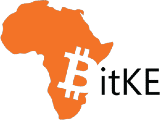Kenya has been ranked at the top position in the 2023 Eastern Africa Youth Digital Readiness Index, followed by Rwanda and Uganda in second and third position respectively.
The report indicates that Ethiopia and Tanzania ranked 4th and 5th as Sudan, DRC, and Somalia occupied the sixth, seventh, and eighth positions.
Kenya leads the pack in Eastern Africa because of its widespread mobile money system, government investments in infrastructure, and initiatives focused on digital literacy. However, it still faces challenges of unequal access to technology in rural areas which is a common hurdle across the region.
The study also indicates that several countries saw an increase in mobile money adoption, fostering financial inclusion.
- Mobile money penetration is rising in Sudan, with platforms like MTN Mobile Money and Zain Cash gaining traction. DRC Congo is also experiencing a rise in Mobile Money adoption with platforms like M-PESA and Orange Money. This mobile money usage surge fosters a cashless society and boosts financial security for many Congolese.
- South Sudan is also experiencing a surge in mobile money adoption. Platforms like Equitel Mobile Money and mJang are facilitating financial inclusion, particularly in rural areas where traditional banking is scarce.
The 2023 Eastern Africa Youth Digital Readiness Index serves as a valuable tool for policymakers, businesses, civil society, and educational institutions, providing nuanced insights into the digital landscape of Eastern African countries offering a roadmap for strategic interventions to foster digital readiness and innovation.
A digitally ready youth population enhances the global competitiveness of Eastern Africa. Countries with a strong digital infrastructure and a skilled workforce are more attractive to global investors and can participate more effectively in the global digital marketplace.
At the same, the study encourages knowledge sharing and joint efforts to maximize impact through collaboration.
Why the study?
- Bridging the knowledge gap: There’s limited data on youth digital readiness across Eastern Africa, making it difficult to tailor interventions and assess progress. This study fills this gap by providing a comprehensive and comparative analysis of 10 countries.
- Informing policy and investment: Policymakers and development stakeholders need data-driven insights to prioritize investments in digital infrastructure, education, and youth development. This study provides a clear picture of strengths and weaknesses, enabling informed decision-making.
- Driving regional progress: Digital readiness is crucial for economic growth, innovation, and social inclusion. By identifying regional leaders and laggards, this study can guide collaborative efforts to bridge the digital divide within Eastern Africa.
- Empowering youth: Equipping youth with digital skills opens doors to education, employment, and entrepreneurship. This study showcases best practices in digital skills development, paving the way for targeted interventions to empower young people.
- Monitoring progress: The research establishes a baseline for measuring future progress in youth digital readiness. The Eastern Africa Youth Digital Readiness Index can be used to track improvements over time and assess the effectiveness of interventions.
- Promoting regional collaboration: The study encourages cross-border knowledge sharing and collaboration between governments, businesses, and educational institutions. It highlights areas where countries can learn from each other and synergize their efforts to maximize impact.
- Contributing to global knowledge: The research findings can inform broader discussions on youth development and digital inclusion in developing countries. It offers valuable insights and best practices that can be applied in other regions facing similar challenges.








